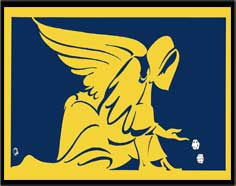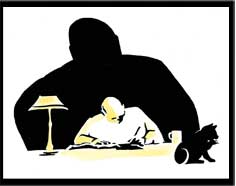Smith was born in 1944 and was a major criminal, involved particularly in armed robbery, heroin trafficking, and murder. He became a Sydney celebrity because of his close relationship during the 1980s with corrupt police detective Roger Rogerson. It was the type of relationship that had often existed before – Smith, like other successful criminals, survived by being a regular police informer. But in this case it attracted considerable publicity because the media and other institutions had started to take a keen interest in corruption. A number of books and the acclaimed television drama series Blue Murder have been based on Smith, Rogerson, and people they associated with, making this the most richly, if unevenly, documented period of organised crime in Sydney.
Smith was a big and very aggressive man, and in the mid-seventies, after serving time for rape and committing a number of armed robberies, he worked as a standover man for Murray Riley. He became a distributor for heroin imported by Riley’s syndicate, later setting up on his own with William Sinclair and Warren Fellows. Soon, he has claimed, he employed ten dealers in Sydney’s eastern suburbs and was turning over millions of dollars a year. His house in St Peters was turned into a fortress with 2.5 metre walls, security doors and windows, and closed circuit television.
The most notorious point in the relationship with Rogerson occurred in 1981, when Smith took young heroin dealer Warren Lanfranchi to a meeting with Rogerson, telling Lanfranchi he guaranteed his safety. Smith had met Lanfranchi in jail and the two had become friends. The reason why Rogerson was so keen on a meeting that day, and why Lanfranchi felt obliged to attend, is still the subject of debate. One theory is that the violent Lanfranchi had been causing too much trouble: he had ripped off a heroin dealer who was under police protection, and on another occasion pointed a gun at a police officer. According to this theory – denied by police – Lanfranchi hoped to make his peace with Rogerson, possibly through payment of a bribe.
On 27 June, Lanfranchi was wearing a body shirt and tight trousers; Smith made sure he did not wear a coat, so it would be clear to police he was unarmed. At the meeting, Rogerson shot Lanfranchi dead, later claiming this was done in self-defence because Lanfranchi had drawn a pistol.
The killing attracted considerable attention. The jury at the coronial inquest declined to say Rogerson had acted in self-defence. This was despite the fact the 18 police in the area when Lanfranchi was killed all supported Rogerson’s version of events. Not one has ever suggested publicly there was anything amiss in their colleague’s action, or implausible in the idea that Lanfranchi managed to smuggle a gun past Smith and then draw it against the well-armed detectives.

For years after the shooting, Lanfranchi’s girlfriend, prostitute and heroin addict Sallie-Anne Huckstepp, claimed he had been murdered. In 1986 Huckstepp, who had been making allegations about the corrupt relationship between Rogerson and Smith (which was not yet widely known), was drowned in a shallow pond in Centennial Park. Smith was charged with her murder but acquitted, and it remains unsolved.
Smith later claimed that Rogerson and colleagues, as a reward for bringing Lanfranchi to the meeting in 1981, gave him a “green light” to commit crime. Police deny this. In the mid-eighties Smith lost his regular source of supply and turned to armed robberies again, specialising in payrolls and making more than half a million dollars. He started to fall out with Rogerson, who was under pressure because of the relationship and in April 1986 announced on television Smith was a police informer. The next night, Smith was run down by a car in Waterloo.
Meanwhile, Rogerson was having his own problems. In June 1984 detective Michael Drury was shot through the window of his home. On what he thought was his deathbed, he claimed Rogerson had tried to bribe him to change the evidence he had been due to give at the drug trial of criminal Alan Williams. Drury had refused the offer, and it later emerged that hitman Christopher Flannery had been hired to kill him, but he managed to survive. Rogerson – who provided an alibi for Flannery at the time of the shooting – was charged with involvement in the attempted murder. He was dismissed from the police force for other reasons in 1986, and later acquitted of the murder charge.
One day in October 1987, Neddy Smith had a big drinking session with a group including Rogerson. Towards evening, Smith and friend Glen Flack headed off alone and were involved in a collision with a towtruck. In the ensuing argument, Smith stabbed tow truck passenger Ronald Flavell, who died. The investigation stumbled when there was a break-in at the local police station and relevant documents were stolen, but in 1990 Smith was sentenced to life in prison for the murder.
In 1994 he boasted to a cellmate about having killed many people. The claims were secretly taped, and Smith was charged with seven murders and tried for two, Sallie-Anne Huckstepp and brothel keeper Harvey Jones. He was acquitted of the former (as we have seen) and convicted and given a second life sentence for the latter. Smith is still alive and in prison, and has spent much of his time in a wheelchair because of Parkinson’s disease.
In his autobiography he wrote: “There has always been crime and corruption within the NSW police force, but nothing like it was [in the 1980s]. … I could never have committed any of the major crimes I did, and got away with them, without the assistance of the NSW police force. They were the best police force that money could buy – believe me, because I bought them hundreds of times.”
Roger Rogerson returned to court several times, being convicted of involvement in drug dealing, which was overturned on appeal, and convicted and jailed on two occasions, once for perverting the course of justice in regard to using bank accounts in a false name, and once for lying to the Police Integrity Commission. At the time of writing (2015) he is facing a murder charge.
MAIN SOURCES: Neddy by Arthur Smith with Tom Noble; The Dark Side by Roger Rogerson; Huckstepp by John Dale; Line of Fire by Darren Goodsir; The Dodger by Duncan McNab; Gangland Australia by James Morton and Susanna Lobez; various articles in the Fairfax press by Wendy Bacon and other reporters over many years.






You must be logged in to post a comment.